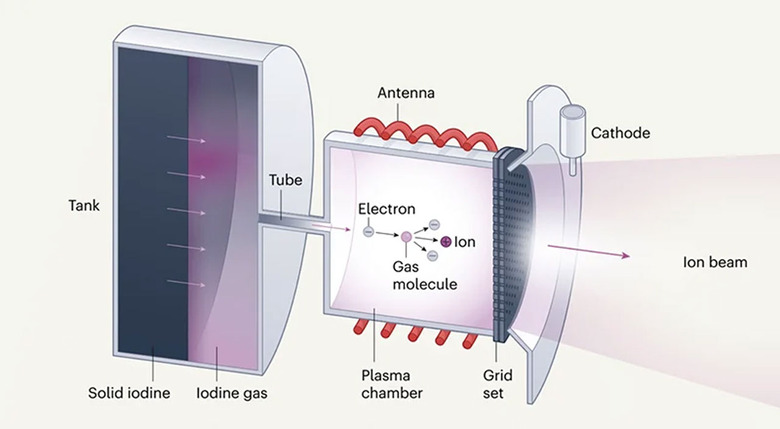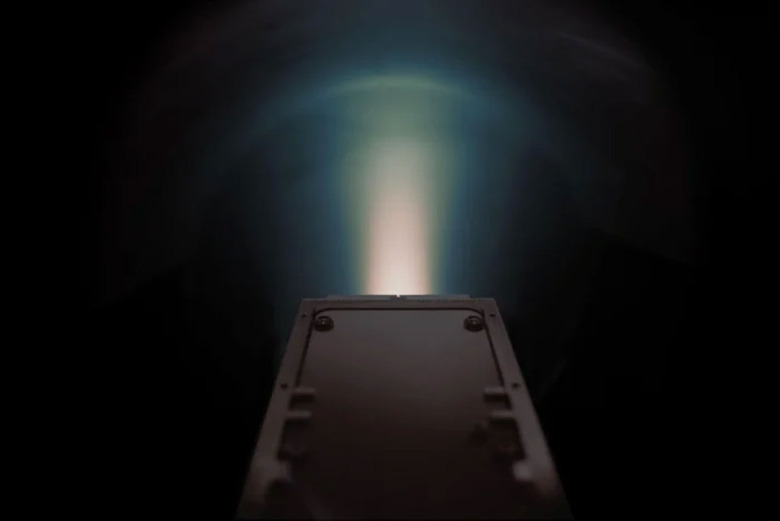Researchers Test Electric Iodine Propulsion Engine For Satellites In Orbit
Satellites orbiting the Earth today are fitted with thrusters to help them achieve the desired orbit and stay there. Today, the thrusters aboard the satellites rely on electricity used to ionize and push xenon particles for thrust. As xenon atoms are ionized, they can build thrust due to their weight. The challenge with utilizing xenon for thrust board satellites is that the gas is rare, expensive, and hard to store.The new electric propulsion engine that was recently tested-fired in orbit utilizes an alternative propellant- iodine. The in-orbit test was conducted by a company called ThrustMe, utilizing iodine as a propellant. ThrustMe believes its engine could be used to make satellites cheaper and more efficient than using current technologies.
The major benefit of using iodine is that it's abundant and is cheaper than xenon. Another big benefit of iodine is that it's able to be stored as a solid without pressurization. Before the in-orbit test, the iodine engine was used in ground-based tests that indicated the technology was feasible for small-scale engines for spacecraft.

For its in-orbit test, company researchers used iodine to power a 44 pound CubeSat satellite. The test engine is called NPT30-I2, and it was launched into orbit on November 6, 2020. While in orbit, it performed maneuvers successfully, and researchers discovered iodine could achieve higher ionization efficiency than xenon.
ThrustMe believes in addition to all the benefits mentioned above, iodine-based engines could be significantly smaller and simpler than the engines currently used aboard satellites. Smaller engines for satellites means more room for payload and instruments in the same size chassis. Simpler engines would mean less opportunity for failure. The main reason the iodine engines can be significantly smaller is because there would need to be no high-pressure tank since iodine can be stored as a solid.

After its successful demonstration, the next steps in the testing program to develop the propulsion system can proceed. While preparing for the orbital tests with the small-scale engine, researchers have also been developing versions with increased performance. In addition, team members are also working on an extensive ground-based endurance test program to explore the limits of the technology.
As the price for launching satellites continues to come down thanks to companies like SpaceX and others, a massive number of satellites is expected to be placed into orbit in the next decade. ThrustMe wants to find ways to make satellites more affordable and efficient, allowing more exploration and analysis of our planet and the universe. While the project is performing well, researchers note there are challenges they have to overcome.
One challenge is the corrosive nature of iodine that requires satellite components to be protected by ceramics. Another challenge is improving the responsiveness of the iodine engines to be on par with those of current xenon components. Technology of this sort could have significant implications for all types of industries.
Perhaps, in the future, companies like SpaceX and others looking to surround the planet with a constellation of satellites to provide Internet connectivity can utilize the new propulsion system. It would help make the satellites cheaper, which would, in turn, make the service cheaper, allowing more people to utilize it. Recently, SpaceX placed 53 additional Starlink satellites into orbit and has plans for tens of thousands of additional satellites surrounding the planet.
